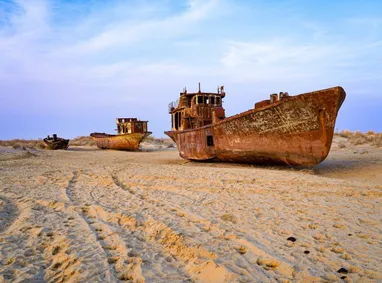WNAM REPORT: Within the framework of the interstate agreement, Kazakhstan and Uzbekistan are starting to implement a large-scale environmental project to protect the Aral Sea region. At a meeting of the Senate of the Parliament of Kazakhstan, the ratification of the relevant document on cooperation in the field of ecology was held, as per reports.
The problem has reached critical proportions: over 110 billion tons of toxic substances have accumulated in the Aral Sea basin. This dangerous mixture includes dried agricultural fertilizers, sea salt and particles of bottom sediment. According to the International Fund for Saving the Aral Sea, the spread of these substances affects vast territories: 68% of the winds are directed towards Karakalpakstan, Turkmenistan and Iran, 20% affect the Kazalinsky district, and the remaining 12-15% move north, reaching even the Arctic Ocean and the Himalayas.
The most serious damage was suffered by the territory of Uzbekistan, where the area of degraded land reached three million hectares. During the parliamentary session, the countries developed a comprehensive action plan to stabilize the environmental situation in the region and counteract sand and salt storms.
An important element of the program is large-scale landscaping of the territory. By 2025, Kazakhstan plans to plant more than a million hectares with saxaul, which will make up almost 50% of the dried-up territory on the Kazakh side. Uzbekistan intends to cover an even larger territory – about two million hectares.
Environmental experts note the complexity of the restoration process: even with standard saxaul planting, the survival rate is about 30% due to the difficult conditions. However, experts are counting on the subsequent natural spread of vegetation due to self-seeding.
The Aral Sea problem is recognized as one of the largest ecological disasters of our time: over the past 50 years, the volume of the reservoir has decreased tenfold. The new agreement between Kazakhstan and Uzbekistan is aimed at combining efforts to prevent further degradation of the region and restore its ecological balance.


